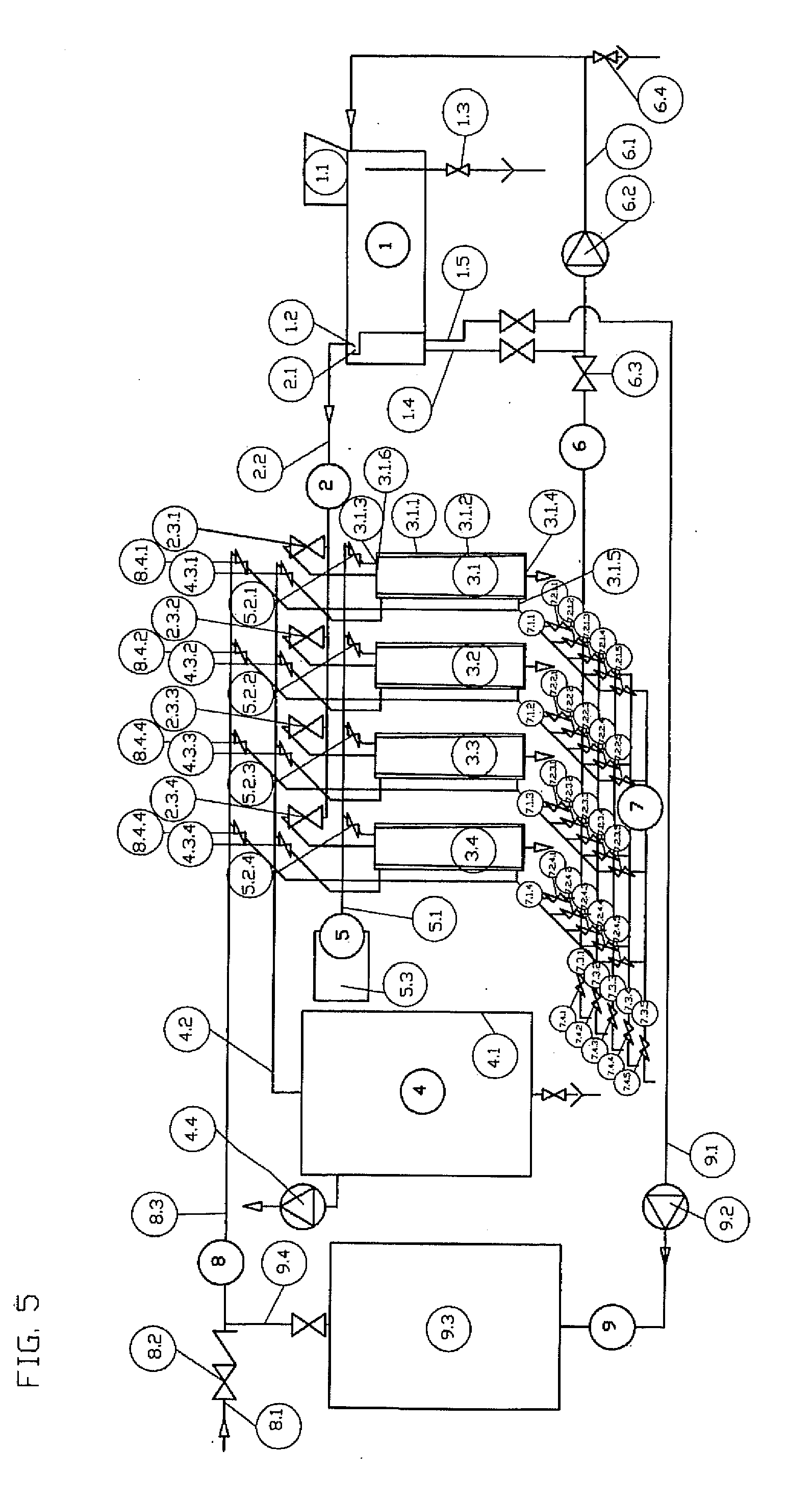Method and equipment for the washing against current, for the transportation and the physical/chemical treatment of vegetables and fruits, in a restricted environment, with high water and energy efficiency
a technology for washing machines and vegetables, applied in the direction of cleaning processes and equipment, chemistry apparatus and processes, cleaning using liquids, etc., can solve the problems of increasing the energy consumption of the environment, and increasing so as to reduce the consumption of disinfecting substances and the effect of easing the operation of cleaning machines and reducing labor costs
- Summary
- Abstract
- Description
- Claims
- Application Information
AI Technical Summary
Benefits of technology
Problems solved by technology
Method used
Image
Examples
Embodiment Construction
[0104]The MWU washing technology is extremely versatile being able to reply to various demands as reported in the designs in FIGS. 5 and 6.
[0105]In particular, the configuration designed in FIG. 6, satisfies the widest range of demand conserving and maximising the advantages that this technology offers with respect to the available technology in use today. The constructive issues listed below refer to a plant configured similar to the one in FIG. 6.
[0106]From a constructive point of view the central unit of a washing plant or treatment plant based on MWU technology of which the present pattern request refers is composed of a few modular elements:[0107]Loading unit (Loading and soaking section)[0108]Modular washing unit with conveying cones (FIG. 4)[0109]Modular washing unit with unloading door (FIG. 3)[0110]pouring manifold (described in n°3.5)[0111]Product supply manifold (described in n°2)[0112]Vacuum manifold (described in n°4.2)[0113]Compensation manifold (described in n°5.2)[01...
PUM
 Login to View More
Login to View More Abstract
Description
Claims
Application Information
 Login to View More
Login to View More - R&D
- Intellectual Property
- Life Sciences
- Materials
- Tech Scout
- Unparalleled Data Quality
- Higher Quality Content
- 60% Fewer Hallucinations
Browse by: Latest US Patents, China's latest patents, Technical Efficacy Thesaurus, Application Domain, Technology Topic, Popular Technical Reports.
© 2025 PatSnap. All rights reserved.Legal|Privacy policy|Modern Slavery Act Transparency Statement|Sitemap|About US| Contact US: help@patsnap.com



